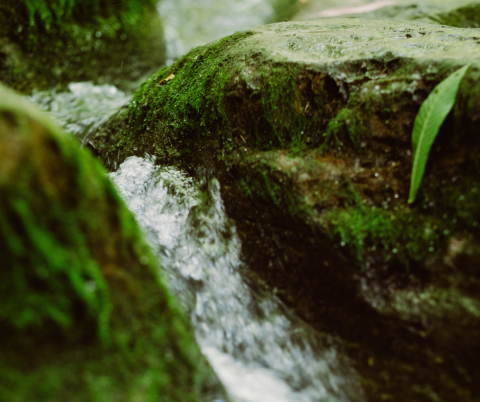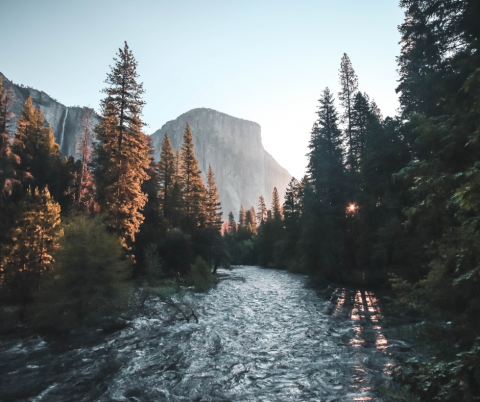Water is the foundation of life, the universe—of everything. It makes up 71% of the surface of the planet and nearly 60% of the human body. Not to mention, all other living animals and plants rely on water to survive every day.
But according to The BBC, “global demand for fresh water will exceed supply by 40% in 2030, thanks to a combination of climate change, human action, and population growth.”
It’s unnerving because while 71% of water covering the surface of the Earth, only 2.5% of that is drinkable. As we speak, a whopping 75% of that drinking water is used by the agriculture industry.
Why Water Shortages Happen
According to the World Wildlife Fund (WWF), almost 1.1 billion people worldwide don’t have access to safe drinking water.
Why is this happening to so many more than ever? The short answer is four-fold: The population is expanding, and fast; climate change has decreased rainfall across the board; rising sea levels are literally cutting off supply to freshwater for many coastal residents; pollution is only worsening in undeveloped countries and areas like Russia that have suffered heavy industrialization and nuclearization over the last century.
Not to mention that 80% of drinkable water is lost in developing countries due to leakage.
Not to mention that 80% of drinkable water is lost in developing countries due to leakage.
Some of these problems are avoidable—like poor city planning, infrastructure issues, and leakage. But if you mix poor city planning with decreased rainfall? That’s a recipe for disaster.
For example, Cape Town, South Africa faced a water shortage crisis in early 2018. Because of years of lower-than-average rainfall, coupled with population expansion, 4 million residents residing in the city were suddenly low on water. At first, the city encouraged to use no more than 19 gallons of water per day. And then in February 2018, they were limited to 13 gallons of water per day. For a city that’s responsible for 9.9% of South Africa’s GDP, that’s a heavy burden to bear. And while this problem happened thanks to poor planning, multiple years of drought, population expansion and inefficient government intervention, it’s easy to imagine that the crisis in Cape Town could have been at the very least mitigated, if not prevented entirely.
But that’s not the only city to see a major water crisis wash up on its shores. Many other cities around the world, both rural and non, developed and developing, are facing water shortages.
International Cities Likely to Experience Water Shortage 
In a recent report, the BBC has named 11 cities around the world, alongside Cape Town, as the cities most likely to experience water shortages in our near future. They include:
- Sao Paulo
- Bangalore
- Beijing
- Cairo
- Jakarta
- Moscow
- Istanbul
- Mexico City
- London
- Tokyo
- Miami
They cite these cities for many reasons, chiefly population expansion. In Mexico City, the residents live off water rations and are only allowed to pull water from their taps for just a few hours per week. This leaves as much as 20% of residents with some level of running water for a brief part of each day. Brazil, a city of 21.7 million residents, faced a similar crisis in 2015 when a reservoir fell below 4% capacity, with only 20 days of water supply left.
In the cases of Tokyo, Istanbul, and London, municipalities are trying to take a page from Cape Town thanks to inadequate rainfall levels that are leaving residents and city managers looking for backup resources to generate drinking water for their populous.
In the cases of Miami and Jakarta, concerns about rising sea levels in the future are bound to drive out residents and create a literal roadblock to accessing freshwater.
In addition, many cities are dealing with a pollution problem they cannot fix. In Cairo, the River Nile provides the city its water—along with water for 97% of Egypt. But a rise in deaths from water pollution is having authorities looking for alternate solutions. Similarly, Moscow provides 25% of the world’s freshwater, but because of Cold War-era mining and nuclearization, much of it is polluted and undrinkable.
Some cities, like Bangalore and Beijing, are dealing with an amalgamation of pollution problems and population expansion. For example, 40% of Beijing’s surface water is polluted; additionally, the country has 1/5th of the world’s population yet it only has 7% of the planet’s freshwater. That’s a rough spot to be in.
U.S. Cities with Water Shortages
The issue of water shortages isn’t far from our own backyard, either. In fact, there are a handful of US cities likely to run out of water. One city — Miami— we’ve already noted. 
El Paso, Texas is facing a water shortage in the near future as well. According to the Weather Channel, the state of Texas is getting 1,000 new residents daily and is expected to double in population size by the year 2050. El Paso is of particular concern as it is situated in the Chihuahuan desert, only getting an average of 9 inches of rainfall annually, with some 700,000 residents needing clean drinking water.
Phoenix, Arizona is facing a similar issue of population expansion and inadequate rainfall levels in the middle of the desert. 40% of the drinking water in Phoenix is sourced from the Colorado River, while the other 60% comes from the Salt River. Surrounded by miles of desert, authorities are already working on contingency plans for when climate change takes its toll on the city’s water sources.
Los Angeles, California has been experiencing drought since 2011 (at its peak, it had to import 89% of its water from 200 miles away), due to inadequate rainfall. Because of this, the city of 4 million people gets most of its water imported from the Colorado River and other sources.
Atlanta, Georgia is one of the most water-stressed cities in the United States. Originally built as a railroad hub, it is built on a ridge, rather than next to the nearby river, the Chattahoochee. It’s from this river that it gets 70% of its water. Unfortunately, the Chattahoochee has experienced many issues related to flooding, keeping both Atlanta and its neighboring cities on the lookout for frequent boil-water warnings.
What We Can Do to Solve Water Shortages
The WWF predicts that more than 66% of the world’s population will experience water shortages by 2025.
The WWF predicts that more than 66% of the world’s population will experience water shortages by 2025.
When it comes to water shortages, the best thing you can do is plan ahead. Call or email your senator or congressperson and get them to start considering back up plans for water shortages in your area if a plan is not yet in place.
You can also cut back on the things that use up the most freshwater resources – like meat and fish or check your foundations at your home for leaky plumbing and fixtures.
Additionally, you can conserve clean drinking water for when you need it most by purchasing a whole home water filter. Americans spend $4 billion annually on bottled water, and while each plastic bottle takes on average 400 years to decompose, Forbes reports that “globally humans buy a million plastic bottles per minute…91% of all plastic is not recycled. On top of that, it is estimated that over half a trillion plastic bottles will be sold in 2020.”
Filtered water can be stored for future use should a water shortage occur in your town, and by using a filter from Aquasana, you can prevent 600 plastic bottles from entering the environment.
There are many ways to aid your fellow man when faced with a water shortage, but the best thing to do is to have a plan already in place—for your community, for your family, for your home.